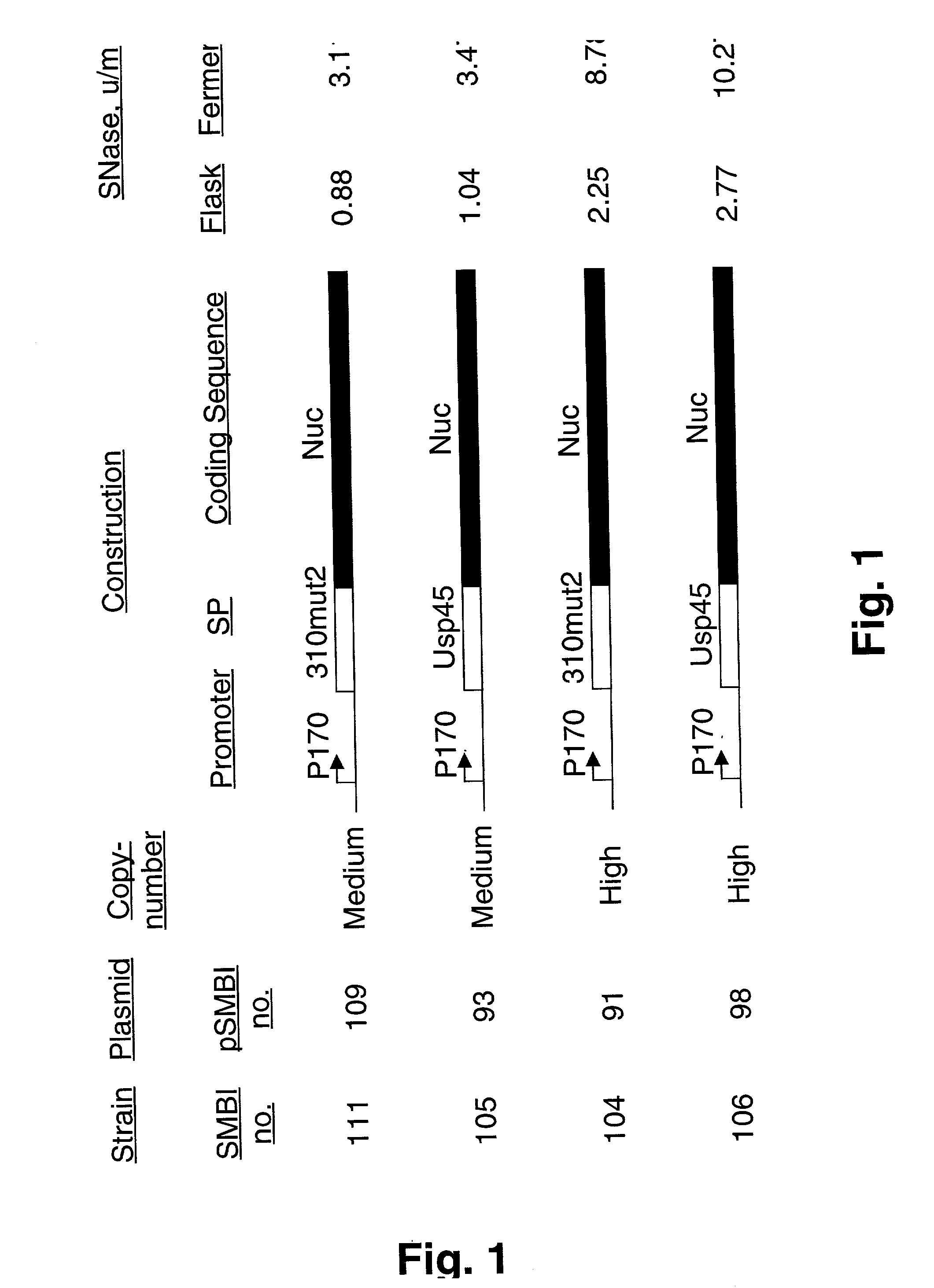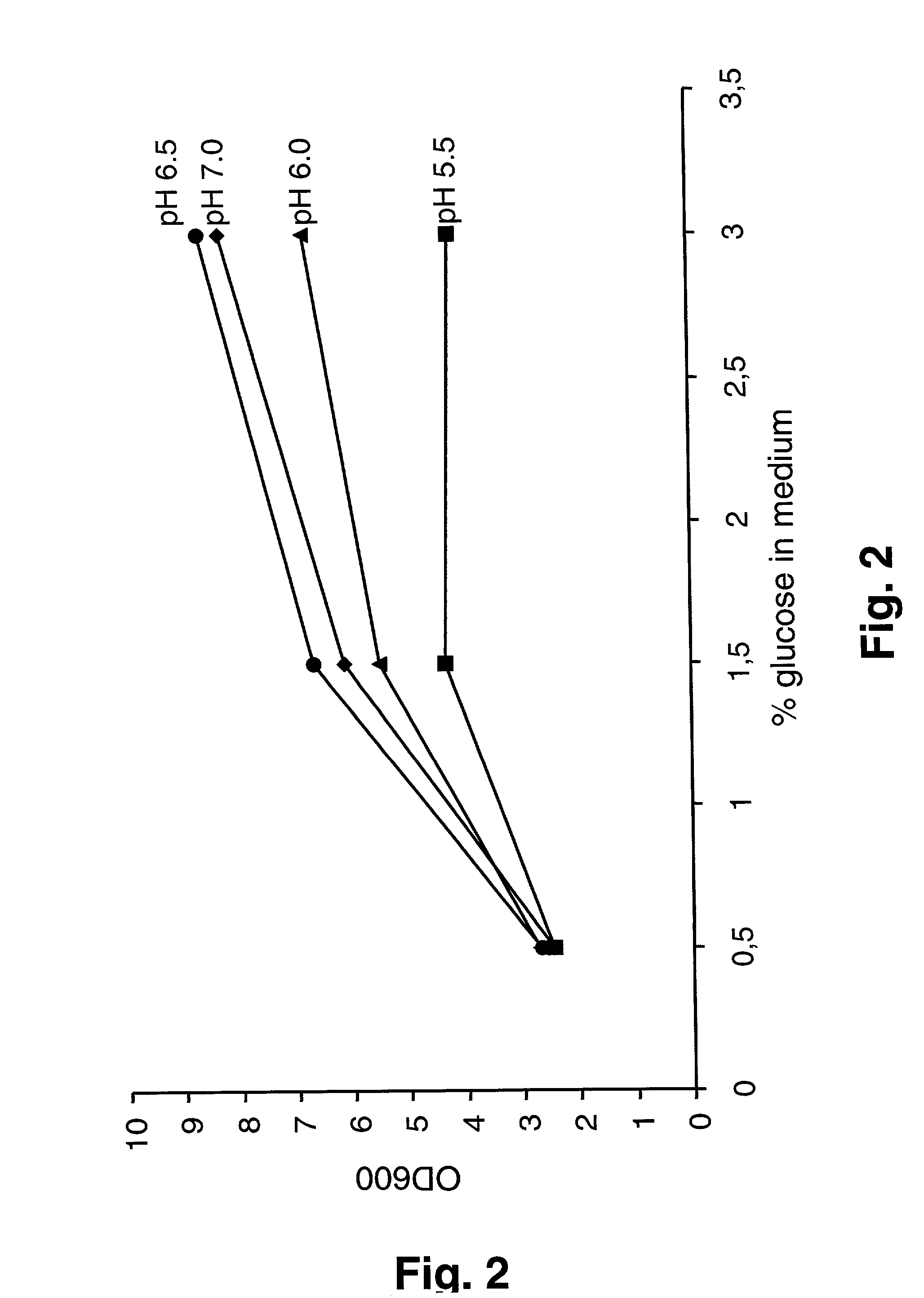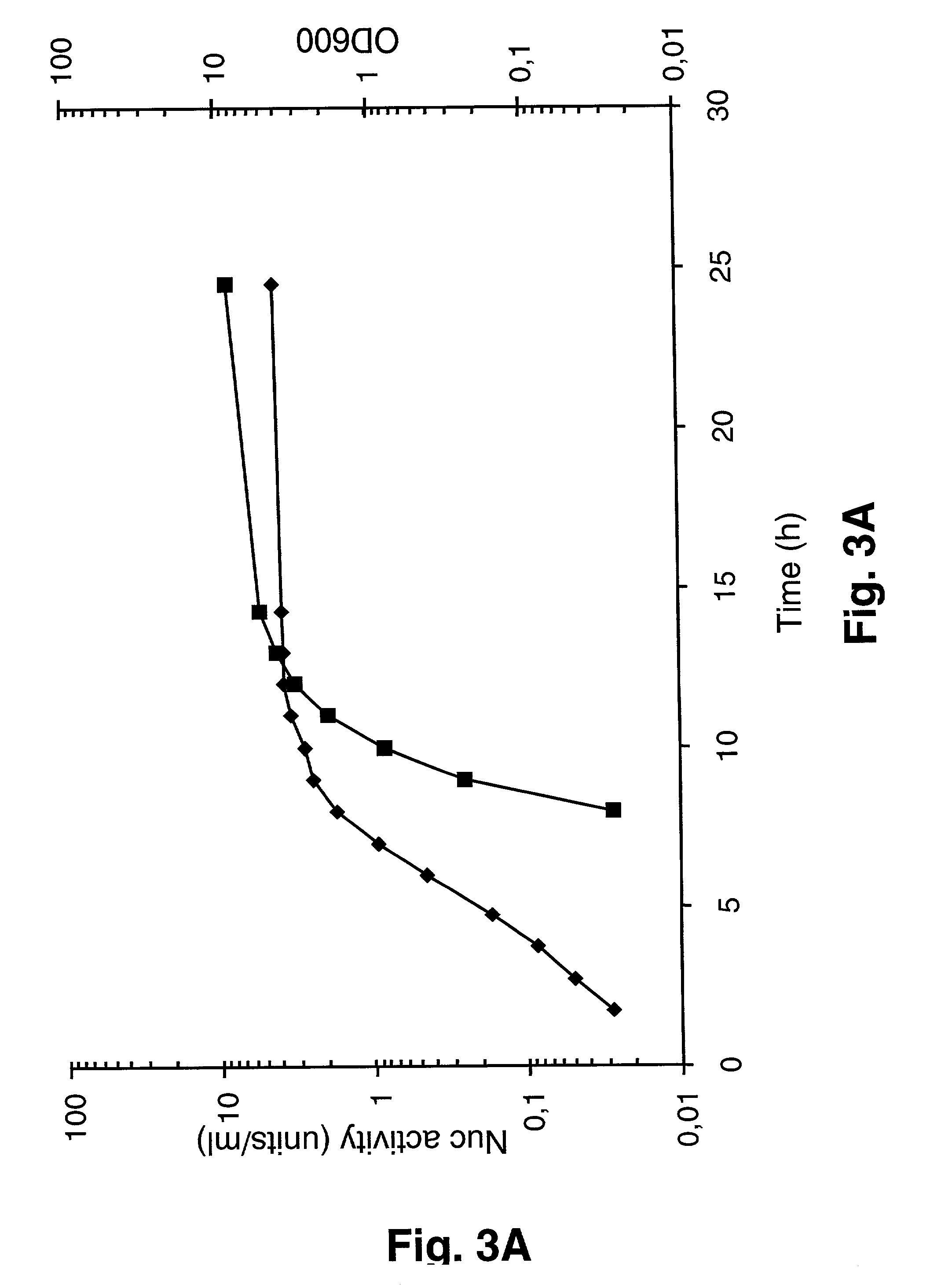Fermentation method for production of heterologous gene products in lactic acid bacteria
a fermentation method and gene product technology, applied in the field of fermentation method for the production of heterologous gene products in lactic acid bacteria, can solve the problems of heterologous gene product yield, cost of using expression system and authenticity/biological activity of recombinant gene product, and yield of gene product significantly lower than that achieved
- Summary
- Abstract
- Description
- Claims
- Application Information
AI Technical Summary
Benefits of technology
Problems solved by technology
Method used
Image
Examples
example 1
[0084] Secretion of S. aureus Nuclease in Flask Culture and Fermentor Culture Using a Nutrient Rich Medium
[0085] 1.1. Flask Culture
[0086] Each of the four nuclease expressing plasmids pSMBI91, pSMBI93, pSMBI98 and pSMBI109 was transformed into L. lactis MG1363 and nuclease activity was determined after growth overnight in flasks in GM17 medium. The results are summarised in FIG. 1.
[0087] Using the medium-copy number vector, which is based on the pAK80 backbone, the use of the Usp45 signal peptide resulted in about 18% higher yield of secreted nuclease relative to the use of the SP310mut2 signal peptide. This difference is slightly higher, about 23%, when the high-copy number vector pTRKH4 is used for expression. The use of the high-copy vector increased the yield of secreted SNase with a factor of 2.5-3 relative to the medium-copy vector. This increase is consistent with the four-fold higher copy number of pTRKH4 relative to that of pAK80 as determined by agarose gel-electrophoresis...
example 2
[0091] pH and Growth Phase Dependent Expression of SNase in a Synthetic Medium Using Batch Fermentation
[0092] The induction of expression from the P170 promoter at low pH during transition to stationary phase has been demonstrated previously in the nutrient rich GM17 medium (Israelsen et al., 1995; Madsen et al., 1999). This rich medium would not be acceptable for most applications in pharmaceutical production, because some of the components are potential sources of animal viruses, prions or allergenic factors. It would therefore seriously limit the range of applications of the P170 expression system if the regulation of the promoter were dependent on the use of GM17 or another rich medium. The present experiments were designed to determine whether effective expression of heterologous proteins could be achieved using the regulatable P170 expression system in a synthetic, ie defined medium.
[0093] As a first test of regulated expression and secretion of SNase from P170 in a synthetic ...
example 3
[0096] Productivity and Kinetics of the P170 Expression System in a Defined Medium Having a High Substrate Concentration Using Batch Fermentation
[0097] In this experiment, an attempt was made to improve the yield of SNase by increasing the amount of medium components. Two sets of fermentor experiments were performed, in which the concentration of glucose was raised to 15 g / L and 30 g / L, respectively in the basal medium LM3, ie LM3-15 and LM3-30, see above. Strain SMBI111 was grown in these media at pH 5.5, 6.0, 6.5 and 7.0, respectively . As illustrated in FIG. 2, the final cell densities did not increase in proportion to the glucose concentration. The lack of linear relationship is most pronounced at the lower pH values. This is a well-known phenomenon for lactic acid bacteria, where growth is often inhibited by lactic acid or other metabolic end products before the available carbon source has been exhausted (Kashket, 1987; Loubiere et al., 1997). The inhibitory effect of lactic ac...
PUM
| Property | Measurement | Unit |
|---|---|---|
| Concentration | aaaaa | aaaaa |
| Density | aaaaa | aaaaa |
| Density | aaaaa | aaaaa |
Abstract
Description
Claims
Application Information
 Login to View More
Login to View More - R&D
- Intellectual Property
- Life Sciences
- Materials
- Tech Scout
- Unparalleled Data Quality
- Higher Quality Content
- 60% Fewer Hallucinations
Browse by: Latest US Patents, China's latest patents, Technical Efficacy Thesaurus, Application Domain, Technology Topic, Popular Technical Reports.
© 2025 PatSnap. All rights reserved.Legal|Privacy policy|Modern Slavery Act Transparency Statement|Sitemap|About US| Contact US: help@patsnap.com



